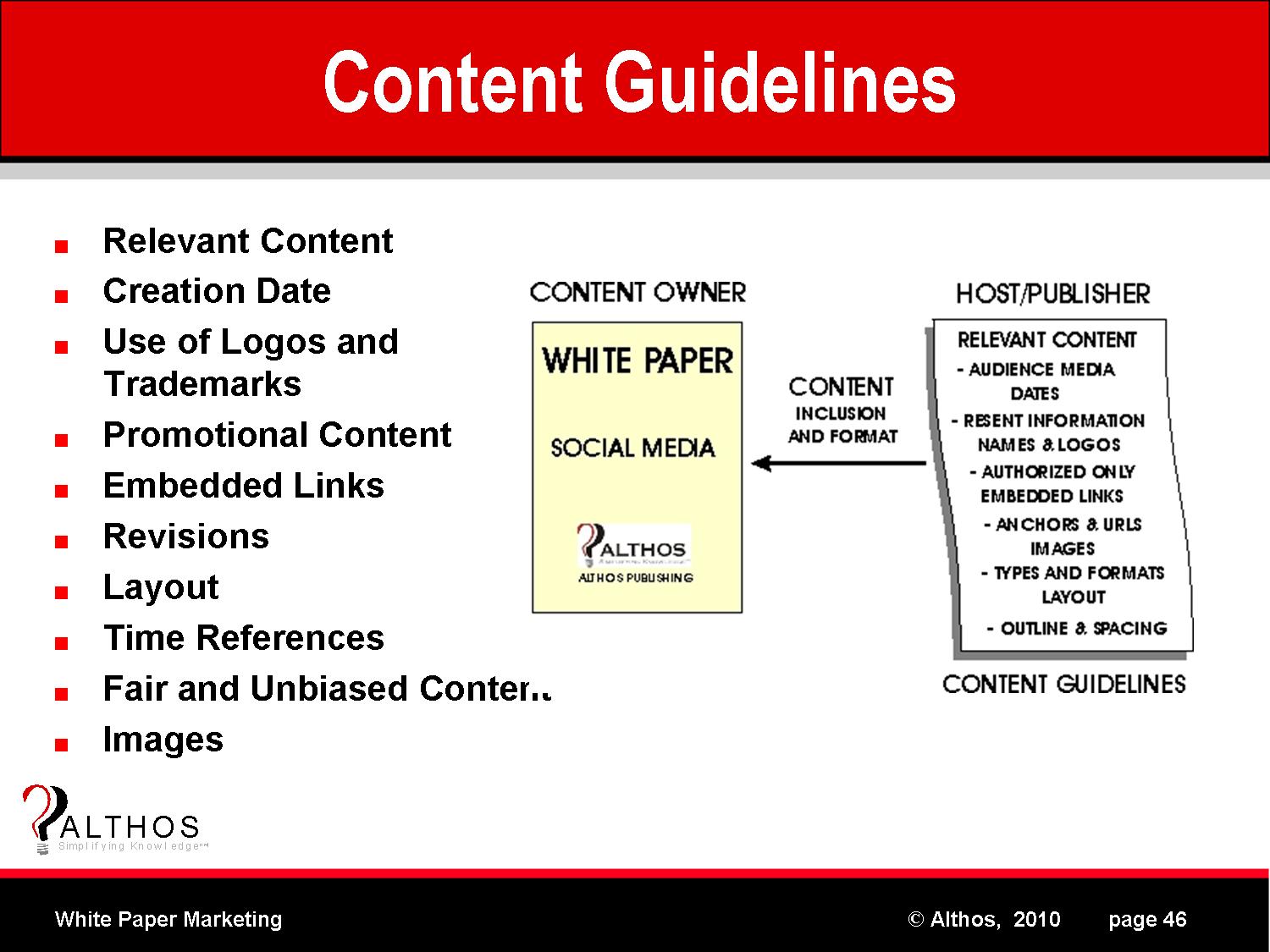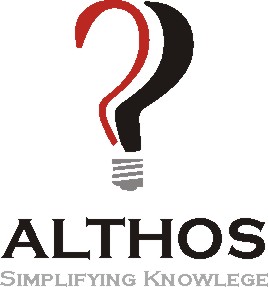 | ||
 White Paper Usage Guidelines |
 White Paper Submission Agreement | |
White
paper content guidelines define the
types of materials that may be included in a white paper and how they may
be presented. The guidelines commonly include relevant content (topic),
use of logos and trademarks, promotional messages, link embedding,
appearance and images.
Relevant Content - The content provided in the white paper should be relevant to the key issue or topic of the white paper. Excessive commentary and unrelated content can distract the reader and dilute the impact of the solution defined by the white paper. Creation Date - The creation date should represent the actual release date of the white paper. If it is determined that the listed creation date and the content contained within the white paper substantially differ (several years), the host may remove the white paper from promotion and distribution. Use of Logos and Trademarks - The white paper should only contain logos and trademarked names that are owned or authorized by the submitting company. White papers commonly utilize logos on each page as a visual reference. Promotional Content - White papers should not contain overt promotional content (ads or coupons). However, it is acceptable for white papers to include helpful promotional references, such as the inclusion of links to available products within the recommendation section of the white paper. Embedded Links - White paper contributors may want to include links within white papers. Links and their reference points (anchor text location) should be provided within a separate file. The host may add tracking codes to the links. Revisions - White paper revisions or updates should be clearly identified, which can be accomplished with the addition of new file names or revision codes to existing file names. It is recommended that white papers be updated every few years, even if there are few changes to the actual content of the white paper. Layout - The white paper should have a professional and consistent appearance. This includes borders of at least 1 inch, page numbers and line spacing of at least 1.5. The structure and positioning of content should allow a progressive level of interest (Earned Engagement™) as readers tend to first scan through the white paper before reading sections in depth. Time References - It is recommended to use limited date referencing in the document if the white paper is expected to be distributed over the course of several years. Readers who see dates that are several years old in the paper may stop reading the document. When time references are used, absolute time references should be used (actual date) rather than relative time references, such as “last year”. Fair and Unbiased Content - White papers should provide a fair representation of the options and solutions presented in the white paper. Slander against competitors or unsubstantiated comparative statements are not allowed. Images - White papers may include the use of relatively simple images, and printing and photocopying of the document should be possible without a significant loss of image quality. The recommended number of images is no more than 1 for each page of text. | ||
 more details |
White Paper Marketing Book
White Paper Marketing, More Sales Leads, Less Effort explains how to use white papers to generate lists of highly qualified sales prospects while providing valuable and well received content to readers. Readers will learn how to develop, promote, and track the effectiveness of white paper marketing. $34.99 Printed, $29.99 eBook |
